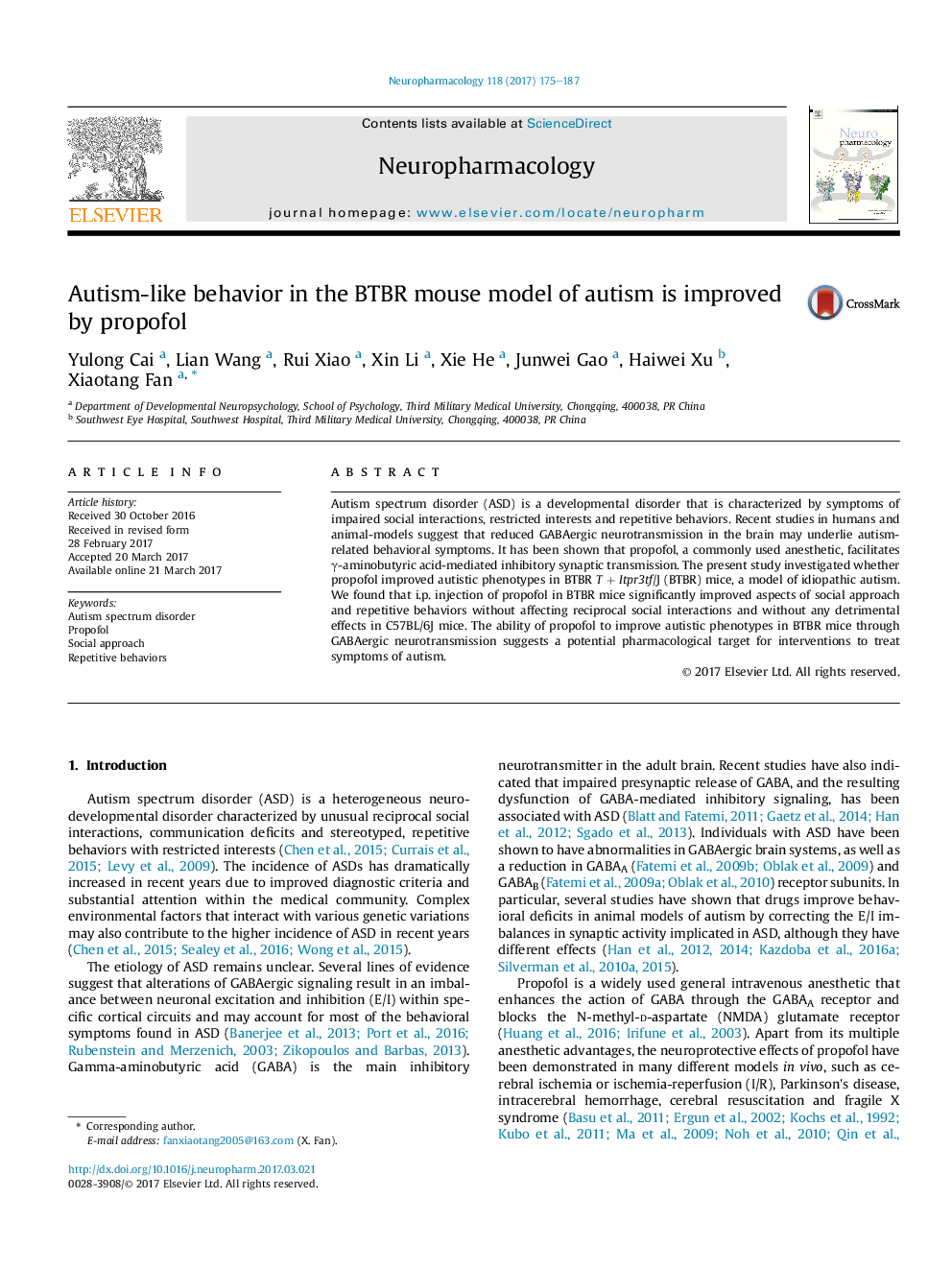| Article ID | Journal | Published Year | Pages | File Type |
|---|---|---|---|---|
| 5549025 | Neuropharmacology | 2017 | 13 Pages |
â¢Propofol was the first time to be used in the model of ASD.â¢Propofol could improve social approach and repetitive behaviors in BTBR mice.â¢This findings support the hypothesis that enhancing inhibitory synaptic transmission offers a therapeutic strategy for ASD.
Autism spectrum disorder (ASD) is a developmental disorder that is characterized by symptoms of impaired social interactions, restricted interests and repetitive behaviors. Recent studies in humans and animal-models suggest that reduced GABAergic neurotransmission in the brain may underlie autism-related behavioral symptoms. It has been shown that propofol, a commonly used anesthetic, facilitates γ-aminobutyric acid-mediated inhibitory synaptic transmission. The present study investigated whether propofol improved autistic phenotypes in BTBR T + Itpr3tf/J (BTBR) mice, a model of idiopathic autism. We found that i.p. injection of propofol in BTBR mice significantly improved aspects of social approach and repetitive behaviors without affecting reciprocal social interactions and without any detrimental effects in C57BL/6J mice. The ability of propofol to improve autistic phenotypes in BTBR mice through GABAergic neurotransmission suggests a potential pharmacological target for interventions to treat symptoms of autism.
